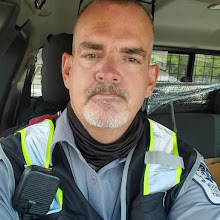Arizona
Painted Rocks
Is a collection of hundreds of ancient petroglyphs in Maricopa County, Arizona near the town of Theba. It is listed on the National Register of Historic Places. The petroglyphs are located within the Painted Rock Petroglyph Site which includes an improved campground as well as an informative walking trail showcasing the petroglyphs.
Painted Rocks is located along a number of important historical routes, including that of Juan Bautista de Anza's expedition of 1775-1776; the route of the Mormon Battalion; and the Butterfield Overland Mail stagecoach route. As a result, the site contains inscriptions made by travelers in these and other groups along with the petroglyphs.
Sign in Sheet
ACCESS:
Exit Interstate 8 at Painted Rock Dam Road (Exit
102) approximately 12.5 miles west of Gila Bend. Travel north on Painted Rock
Dam Road (paved) 10.7 miles to Rocky Point Road (unpaved). Painted Rock
Petroglyph Site is 0.6 miles west of Painted Rock Dam Road on Rocky Point
Road.
The Painted Rock Dam
Was constructed during a 3 year period from 1957-1960 by the United States Army Corps of Engineers to help control seasonal floods on the lower reaches of the Gila River. The river had no significant impediments between the Colorado River and the Coolidge Dam hundreds of miles upstream.
As the river receives several tributaries, including the Hassayampa, Agua Fria rivers, and most importantly the Salt River and its major tributary, the Verde River. Due to a relatively large watershed of 50,800 square miles (132,000 km2), more than half of which is unregulated, the flood threat to small farming communities downstream on the Gila River is large, and seasonal flooding of these areas prior to the construction of the dam was significant.
The area surrounding the dam has also hosted a number of historical events. The Butterfield Overland Mail route passed through the area, as did the path followed by the Mormon Battalion. Evidence of both can be found, as well as the expedition of Juan Bautista De Anza in 1774.
Are dry as of August 2009 and are closed to the public due to contamination of pesticide run off. This is in stark contrast to the level of upkeep during the 1990s. The state was forced to abandon the campground and the area is now marked as "NO TRESPASSING". No hunting, hiking, or camping is allowed. The Army Corps of Engineers now maintains the property.
The Painted Rock Reservoir
Is an artificial reservoir impounded by the Painted Rock Dam. The reservoir, with a maximum storage capacity of 2,491,700 acre feet (3.0735×109 m3), has the potential to be the largest reservoir completely within the borders of the state of Arizona, but because the Gila River and its main tributary, the Salt River, are generally almost always completely diverted for irrigation and municipal water use for Phoenix, the lake is often dry.
In 2005, heavy runoff filled the reservoir to record levels, swelling the lake to become the second largest by area in the state of Arizona, trailing only Theodore Roosevelt Lake. However, extremely high levels of pesticides, particularly the now-banned DDT, had built up in the farmlands upstream from the reservoir in the decades prior and accumulated in the lake during the flood. The extreme toxicity of the lake rendered it unsuitable for recreational uses and public access to both the lake and the dam was restricted.
Similar runoff had filled the lake previously in 1993 and 1980, and in each instance the lake persisted only a few months before emptying due to losses through evaporation, downstream releases, and infiltration.
Photo taken during period of high runoff,
with the resultant reservoir nearly full





















































No comments:
Post a Comment